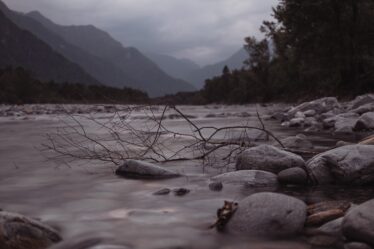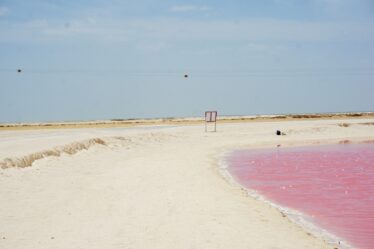
Kata Tjuta, also known as The Olgas, is a stunning natural wonder located in the heart of Australia’s Red Centre in the Northern Territory. Part of the Uluru-Kata Tjuta National Park, Kata Tjuta is a group of large, domed rock formations that are as culturally significant as they are visually impressive. This detailed guide will explore the history, geology, cultural significance, attractions, and practical information you need to make the most of your visit to Kata Tjuta.
Historical and Cultural Significance
Indigenous Heritage
Kata Tjuta holds profound spiritual significance for the Anangu people, the traditional custodians of the land. The name “Kata Tjuta” means “many heads” in the Pitjantjatjara language, reflecting the site’s unique geological features. The Anangu people have a deep connection to this land, and the stories, or Tjukurpa, associated with Kata Tjuta are integral to their cultural heritage and spirituality.
Cultural Practices
The Anangu people request that visitors respect the cultural importance of Kata Tjuta. Certain areas are off-limits to visitors, and the Anangu provide guided tours that offer insight into their traditions, stories, and the natural environment of the area.
Geological Features
Formation
Kata Tjuta consists of 36 domed rock formations, with Mount Olga being the highest at 546 meters above the surrounding plain. The formations are made of conglomerate rock, composed of granite and basalt, cemented by sandstone. These rocks date back over 500 million years and have been shaped by erosion over millennia.
Comparison with Uluru
While Uluru is a monolithic sandstone formation, Kata Tjuta’s domes are composed of a mix of rock types. This geological diversity contributes to the distinct appearance and structure of Kata Tjuta, setting it apart from its more famous neighbor.
Attractions and Activities
Valley of the Winds Walk
The Valley of the Winds Walk is one of the most popular and rewarding activities at Kata Tjuta. This 7.4-kilometer loop trail takes visitors through breathtaking scenery, including several lookout points offering panoramic views of the domes and the surrounding desert.
Highlights:
- Karingana Lookout: Offers stunning views of the domes and the surrounding landscape.
- Ngaro Gorge: A shaded area perfect for a rest, surrounded by towering rock walls.
Walpa Gorge Walk
For a shorter and less strenuous option, the Walpa Gorge Walk is a 2.6-kilometer round trip through a narrow, rocky path between two of Kata Tjuta’s largest domes. This walk is ideal for those looking to experience the majesty of the formations without committing to a longer hike.
Sunrise and Sunset Viewing
Kata Tjuta offers spectacular views during sunrise and sunset, similar to Uluru. Designated viewing areas provide the perfect vantage points to witness the domes bathed in the golden and red hues of dawn and dusk.
Practical Information
Best Time to Visit
The best time to visit Kata Tjuta is during the cooler months from April to September. During these months, temperatures are more moderate, making outdoor activities more enjoyable. The summer months (December to February) can be extremely hot, with temperatures often exceeding 40°C (104°F).
Getting There
Kata Tjuta is located within the Uluru-Kata Tjuta National Park, approximately 25 kilometers west of Uluru. The nearest airport is Ayers Rock Airport (Connellan Airport), which is about 50 kilometers from Kata Tjuta. Regular flights are available from major Australian cities. From the airport, visitors can rent a car or take a shuttle service to reach the park.
Park Fees and Permits
Visitors to Uluru-Kata Tjuta National Park are required to pay an entry fee, which helps support the management and conservation of the park. The fee is valid for three consecutive days and can be purchased at the park entrance or online.
Health and Safety
When visiting Kata Tjuta, consider the following health and safety tips:
- Stay Hydrated: The arid climate can lead to dehydration, so carry plenty of water and drink regularly.
- Sun Protection: Wear high-SPF sunscreen, a hat, sunglasses, and protective clothing to guard against the intense sun.
- Trail Safety: Stick to designated trails, wear sturdy footwear, and avoid hiking during the hottest parts of the day.
Accommodation
Ayers Rock Resort
Located in the nearby town of Yulara, Ayers Rock Resort offers a range of accommodation options to suit different budgets and preferences:
- Sails in the Desert: A luxury hotel featuring spacious rooms, a swimming pool, a spa, and fine dining options.
- Desert Gardens Hotel: A mid-range option with comfortable rooms, a swimming pool, and a restaurant with views of the desert.
- Outback Pioneer Hotel & Lodge: Offers a range of affordable accommodations, including hotel rooms, lodge rooms, and a campground.
- Longitude 131°: An exclusive, luxury glamping experience with stunning views of Uluru, offering private tents, fine dining, and personalized service.
Camping
For those who prefer a more rustic experience, there are campgrounds available at Ayers Rock Resort, offering both powered and unpowered sites, as well as facilities such as showers, kitchens, and barbecue areas.
Environmental Conservation
Protecting the Landscape
Kata Tjuta is a protected area, and visitors are encouraged to follow all guidelines for conservation, including not disturbing wildlife, disposing of waste properly, and staying on designated paths.
Respecting Cultural Heritage
Visitors are reminded to respect the cultural significance of Kata Tjuta by not entering restricted areas and by following the guidelines provided by the Anangu people and park authorities.
Conclusion
Kata Tjuta, with its striking rock formations and profound cultural significance, is a must-visit destination for anyone exploring Australia’s Red Centre. Whether you’re hiking through the Valley of the Winds, marveling at the sunset over the domes, or learning about the rich Indigenous heritage, Kata Tjuta offers a unique and unforgettable experience. By respecting the cultural and natural environment, visitors can help preserve this incredible landscape for future generations to enjoy.


